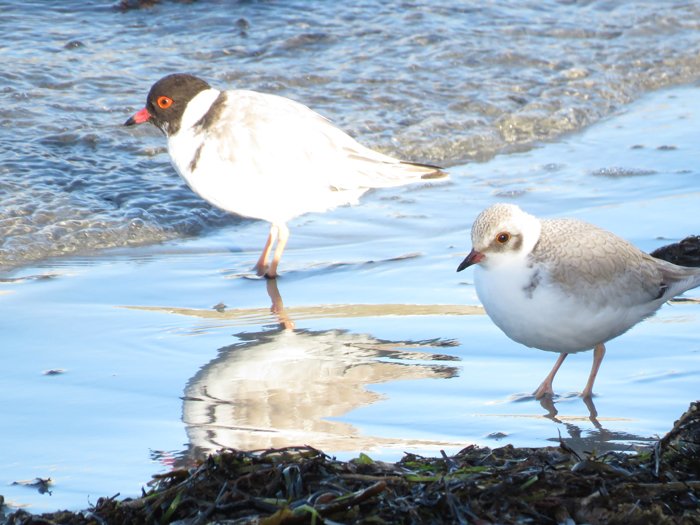Protecting our shorebirds this summer
Did you know that half of the remaining eastern hooded plover population call Tasmania home? What’s more, approximately 20 per cent of these can be found on our north-eastern beaches.

the common, football-field-swooping masked lapwing is often called a plover, giving the timid, endangered hooded plover a bad rap.
Hooded plovers are small, threatened shorebirds. They live on beaches and rely on these areas to feed and nest. With summer here, hooded plovers are now in their breeding season and will spend the next few months creating their nests. Hooded plovers lay their tiny, speckled eggs in a shallow scrape in the sand above the high-tide mark, and while their eggs are well camouflaged from predators, they are also incredibly difficult to see, and easy to step on.
Some of the greatest threats to hooded plovers are people, dogs, horses, and vehicles on beaches that can inadvertently disturb and crush nests and chicks. Disturbing hooded plover parents can also be deadly - they spook easily and will abandon eggs and chicks if a perceived threat comes too close. Sadly, eggs and chicks can perish in as little as 15 minutes without the protection of their parents.
So, as you walk on the beach, be mindful of where you tread, keep to the wet sand, and adhere to dog on-leash and exclusion zones. If you see a roped-off area, this means a nest has been identified - please be a good egg and give it a wide berth.
As you enjoy the beach this summer, you may spot some of our other resident shorebirds, such as pied and sooty oystercatchers, red-capped plover, fairy terns and little terns. These birds also depend on the beach for feeding and raising their chicks. You can give these new families the space they need to succeed; sharing the shore responsibly is the best way we can contribute to their survival.
From the folks at NRM North, Birdlife Australia, Birdlife Tasmania, the Northeast Bioregional Network, Tasmania Parks and Wildlife, and Break O’Day Council, who are working together for shorebird conservation on our beautiful east coast, we thank you for sharing the shoreline responsibly this summer!
The Hooded Plover Project is supported by NRM North through funding from the Australian Government’s National Landcare Program.